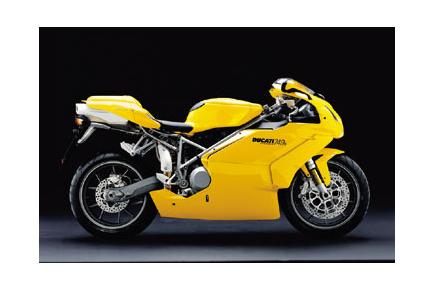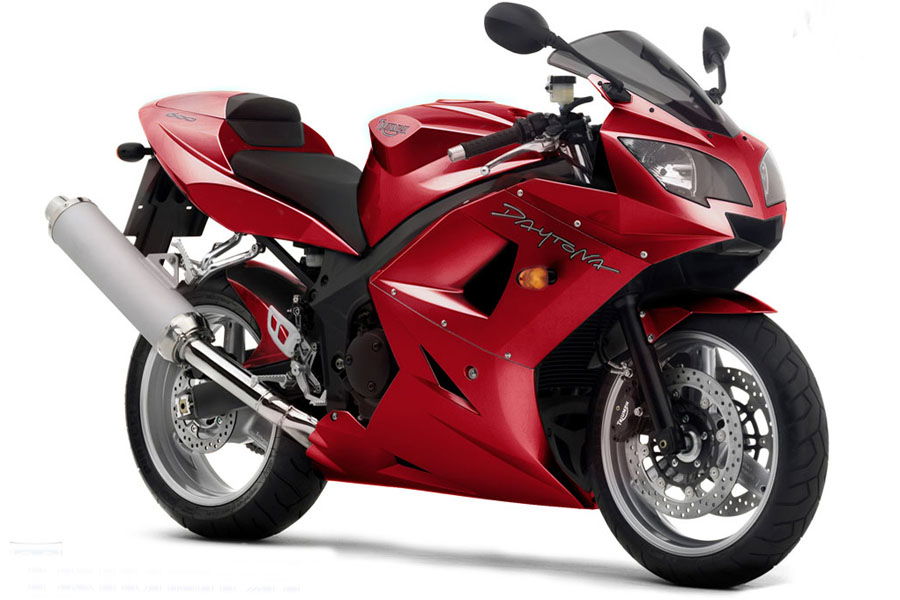R1100S (1998 - 2005) review
As a road bike the Sport S is very good, with loads of low-down power, an excellent gearbox and low maintenance shaft-drive

The BMW R1100S isn't going to radically change sportsbike rider's perception of Beemers overnight but it's actually a pretty capable track bike.
And a very good road one. Lining up in the fast group of the trackday waiting to go out on track I was a bit unsure on how the BMW would get on. I mean alongside there were Ducatis on slicks, race prepped CBRs, GSX-R1000s… and me on a road going BMW. Well one thing was for sure, if I could get ahead then it would be a brave rider to try and squeeze past the huge BMW with its cylinder heads sticking out either side taking up half the track.
The first few warm-up laps confirmed one thing, the Beemer is a big bike. Even at six-foot plus I had more than enough room on the Sport. The bars are wide and set quite high in more of a touring position than a race-rep’s low-slung clip-ons and the pegs are positioned for comfort.
Tyres warmed and with the pace upped slightly the Beemer started to get into its stride, and I started to get out of breath. BMW quote the weights for their bikes including a full tank of fuel and all the oil etc. in the engine, unlike the Japanese who quote dry weights with helium in the tyres, so you can probably take around 20kg off the 229kg quote weight of the Sport as a fair comparison. But either way that’s still a large amount of metal to throw around a track, and it feels it.
It takes a fair amount of effort to get the Sport to change direction and after eight laps my fitness regime of beer, takeaways and TV was starting to tell. The large bars help with leverage to turn the bike but most of the effort goes through your legs as you force the peg down to drop the Sport into the corner.
Once you have actually got the BMW into the corner it’s actually very stable and its weight isn’t so apparent. I was a bit nervous about the cylinders grinding out because they don’t look that far off the ground and when something solid like an engine touches down it often levers the front wheel off the ground, resulting in a trip into the gravel, but they are a lot higher than they look, mainly due to the suspension.
BMW has stuck with its Telelever front end on the Sport, which does away with the need for normal forks. It’s a bit strange to use at first because when you slam on the brakes there are no mechanical signs, such as a dive from the front, to tell you that you are slowing.
It’s an odd sensation and at first you end up braking too hard because you just don’t think you are slowing down. The advantages of this system, according to BMW, are that the front suspension only has to deal with bumps as the braking force goes directly into the Telelever, unlike a fork which has to absorb the braking forces as well as and bumps on the track. With the suspension less loaded up the theory goes that the Telelever can deal with bumps that could force the tyre to lose traction better so you can brake later and harder into a corner.
I can’t really say if it is better or worse than forks but it does give you confidence to really push the front into a corner and brake stupidly late and because the front isn’t diving the engine’s heads are kept further away from the track giving more ground-clearance.
On the trackday the Sport could hold the same corner speed going into and mid-corner as most bikes, but on the exit it lost out due to a lack of power. The engine isn’t massively powerful and past the apex wanting to drive out it doesn’t have much oomph and gets left behind by 600s. Although with the power concentrated low-down gear changes between corners can be kept to a minimum. Also the Metzeler Sportec M-1 tyres never fail to impress whichever bike they are on.
The BMW R1100S isn't going to radically change sportsbike rider's perception of Beemers overnight but it's actually a pretty capable track bike.
And a very good road one. Lining up in the fast group of the trackday waiting to go out on track I was a bit unsure on how the BMW would get on. I mean alongside there were Ducatis on slicks, race prepped CBRs, GSX-R1000s… and me on a road going BMW. Well one thing was for sure, if I could get ahead then it would be a brave rider to try and squeeze past the huge BMW with its cylinder heads sticking out either side taking up half the track.
The first few warm-up laps confirmed one thing, the Beemer is a big bike. Even at six-foot plus I had more than enough room on the Sport. The bars are wide and set quite high in more of a touring position than a race-rep’s low-slung clip-ons and the pegs are positioned for comfort.
Tyres warmed and with the pace upped slightly the Beemer started to get into its stride, and I started to get out of breath. BMW quote the weights for their bikes including a full tank of fuel and all the oil etc. in the engine, unlike the Japanese who quote dry weights with helium in the tyres, so you can probably take around 20kg off the 229kg quote weight of the Sport as a fair comparison. But either way that’s still a large amount of metal to throw around a track, and it feels it.
It takes a fair amount of effort to get the Sport to change direction and after eight laps my fitness regime of beer, takeaways and TV was starting to tell. The large bars help with leverage to turn the bike but most of the effort goes through your legs as you force the peg down to drop the Sport into the corner.
Once you have actually got the BMW into the corner it’s actually very stable and its weight isn’t so apparent. I was a bit nervous about the cylinders grinding out because they don’t look that far off the ground and when something solid like an engine touches down it often levers the front wheel off the ground, resulting in a trip into the gravel, but they are a lot higher than they look, mainly due to the suspension.
BMW has stuck with its Telelever front end on the Sport, which does away with the need for normal forks. It’s a bit strange to use at first because when you slam on the brakes there are no mechanical signs, such as a dive from the front, to tell you that you are slowing.
It’s an odd sensation and at first you end up braking too hard because you just don’t think you are slowing down. The advantages of this system, according to BMW, are that the front suspension only has to deal with bumps as the braking force goes directly into the Telelever, unlike a fork which has to absorb the braking forces as well as and bumps on the track. With the suspension less loaded up the theory goes that the Telelever can deal with bumps that could force the tyre to lose traction better so you can brake later and harder into a corner.
I can’t really say if it is better or worse than forks but it does give you confidence to really push the front into a corner and brake stupidly late and because the front isn’t diving the engine’s heads are kept further away from the track giving more ground-clearance.
On the trackday the Sport could hold the same corner speed going into and mid-corner as most bikes, but on the exit it lost out due to a lack of power. The engine isn’t massively powerful and past the apex wanting to drive out it doesn’t have much oomph and gets left behind by 600s. Although with the power concentrated low-down gear changes between corners can be kept to a minimum. Also the Metzeler Sportec M-1 tyres never fail to impress whichever bike they are on.
| Length (mm) | 2180 |
| Width (mm) | 880 |
| Height (mm) | 1160 |
| Dryweight (kg) | 208 |
| Seats | 0 |
| Seat Height (mm) | 800 |
| Suspension Front | BMW Motorrad Telelever; stanchion diameter 35 mm, central strut, |
| Suspension Rear | Die-cast aluminium single-sided swinging arm with BMW Motorrad Paralever; central strut, |
| Adjustability Front | Rebound damping adjustable |
| Adjustability Rear | Spring pre-load adjustable to continuously variable levels by means of hydraulic handwheel, rebound damping adjustable |
| Wheels Front | 3.50 x 17 |
| Wheels Rear | 5.00 x 17 |
| Tyres Front | 120/70 ZR 17 |
| Tyres Rear | 170/60 ZR 17 |
| Brakes Front | EVO-brake system with dual disc, floating brake di |
| Brakes Rear | Single disc brake, diameter 276 mm, double-piston |
| Tank Capacity (litres) | 18 |
| Chassis | Three-section composite frame consisting of front and rear section, load bearing engine. |
| Cubic Capacity (cc) | 1085 |
| Max Power (bhp) | 97 |
| Max Power Peak (rpm) | 7500 |
| Torque (ft/lb) | 72 |
| Torque Peak (rpm) | 5750 |
| Bore (mm) | 99 |
| Stroke (mm) | 70.5 |
| Valve Gear | Single cam |
| Compression Ratio | 11.3 |
| Valves Per Cylinder | 4 |
| Cooling | Air/oil cooled |
| Fuel Delivery | Electronic intake pipe injection |
| Stroke Type | Four Stroke |
| Drive | Shaft |
| Top Speed | 135.2 |

